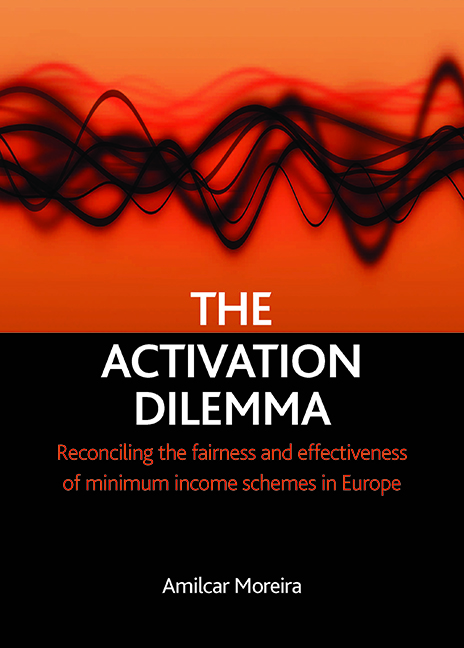 The Activation Dilemma
The Activation Dilemma Book contents
- Frontmatter
- Dedication
- Contents
- List of tables and figures
- List of abbreviations
- Acknowledgements
- one Introduction
- two The right to a minimum income: between Mead and Van Parijs
- three Justifying a minimum income guarantee: the right to personal development
- four The activation dilemma: a comparative study
- five Measuring respect for the right to personal development
- six The employment effectiveness of minimum income schemes
- seven The employment effectiveness of minimum income schemes and their respect for the right to personal development
- eight Conclusion
- Appendix A Methodology for benefit comparison
- Appendix B Unemployment reintegration capacity (URC): sensitivity analysis
- Appendix C Qualitative comparative analysis: laws of Boolean algebra
- References
- Index
- Also available from The Policy Press
Appendix A - Methodology for benefit comparison
Published online by Cambridge University Press: 21 January 2022
- Frontmatter
- Dedication
- Contents
- List of tables and figures
- List of abbreviations
- Acknowledgements
- one Introduction
- two The right to a minimum income: between Mead and Van Parijs
- three Justifying a minimum income guarantee: the right to personal development
- four The activation dilemma: a comparative study
- five Measuring respect for the right to personal development
- six The employment effectiveness of minimum income schemes
- seven The employment effectiveness of minimum income schemes and their respect for the right to personal development
- eight Conclusion
- Appendix A Methodology for benefit comparison
- Appendix B Unemployment reintegration capacity (URC): sensitivity analysis
- Appendix C Qualitative comparative analysis: laws of Boolean algebra
- References
- Index
- Also available from The Policy Press
Summary
Chapter Five uses the minimum income recipients’ ‘total household net disposable income’ as a percentage of the poverty line as an indicator of the degree to which minimum income schemes provide a level of income that allows recipients to participate fully in society. The objective here is to clarify the methodology used to calculate this indicator.
Following relevant literature on the topic (see Eardley et al, 1996a, p 110), it was decided to compare the disposable income of four different households: a household headed by a single person; a household headed by a single parent; a couple without children; and a couple with children. Bearing in mind that these are not traditionally relevant in the population of social assistance beneficiaries, it was decided not to include a large household in this study (Kuivalainen, 2003, p 133).
In order to improve the reliability of the analysis, it was decided to introduce a number of restrictions in these family models. For instance, in order to exclude young adults who, in some countries, have lower benefit rates; and older beneficiaries, who might be entitled to non-contributory social pensions, the study compared adults aged 40. Also, in order to capture the impact of differentiated benefit rates of family allowances in the households’ disposable income, it was decided to focus on children of pre-school age (3) and of school age (7). Considering the previous criteria, this comparative study focuses on four household types:
• single person, aged 40
• lone parent with two children (first child to be 7 and the second child 3 years old)
• couple (both aged 40) without children
• couple (both aged 40) with two children (first child to be 7 and the second child 3 years old)
The value of the poverty line was set at 60% of the median equivalised income (Eurostat, 2003b, p 3). In order to calculate the value of the poverty line for the different households, it was decided to use the ‘modified’ OECD (Organisation for Economic Co-operation and Development) equivalence scale, which gives a weight of 1.0 to the first adult, 0.5 to any other household member aged 14 and over, and 0.3 to each child (Eurostat, 2003b, p 1).
- Type
- Chapter
- Information
- The Activation DilemmaReconciling the Fairness and Effectiveness of Minimum Income Schemes in Europe, pp. 127 - 132Publisher: Bristol University PressPrint publication year: 2008


